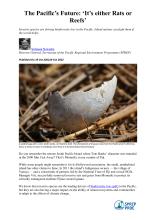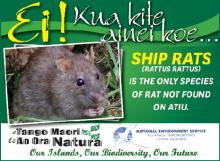Conservation gains and missed opportunities 15 years after rodent eradications in the Seychelles


Island and Ocean Ecosystems, BRB
Available Online
Accouche, W.
,
Appoo, J.
,
Bristol, R.M.
,
Havemann, C.P.
,
Millett, J.E.
,
Retief, T.A.
,
de Groene, A.
,
van Dinther, M.A.J.A.
,
van de Crommenacker, J.
2019
The Seychelles was one of the ?rst tropical island nations to implement island restoration resulting in biodiversity gain. In the 2000s a series of rat eradication attempts was undertaken in the inner Seychelles islands which had mixed results. Three private islands with tourist resorts successfully eradicated rats: Frégate (2000), Denis Island (2003) and North Island (2005). Frégate Island was successful with the ?rst eradication attempt whereas North and Denis Islands were initially unsuccessful, and both required second eradication operations. All three islands have developed conservation programmes including biosecurity, habitat rehabilitation, and species reintroductions, and have integrated nature into the tourism experience. Conservation actions, including rat and other invasive species eradications, on these three islands resulted in the creation of 560 ha of mammalian predator-free land, the reintroduction of seven populations of ?ve globally threatened birds (GTB) and the safeguarding of two existing GTB populations and several reptile and invertebrate species. However, on these and many other islands in the Seychelles, the potential of this conservation model, where island owners implement conservation programmes largely funded by the tourism businesses in collaboration with NGOs (Non-Government Organisations), has not been fully realised. We review the rehabilitation on Frégate, Denis and North Islands from inception to the present, and assess factors that have facilitated the subsequent development of conservation programmes, the presence of receptive businesses and governmental/NGO/donor support and explore limitations on business-led island rehabilitation.






